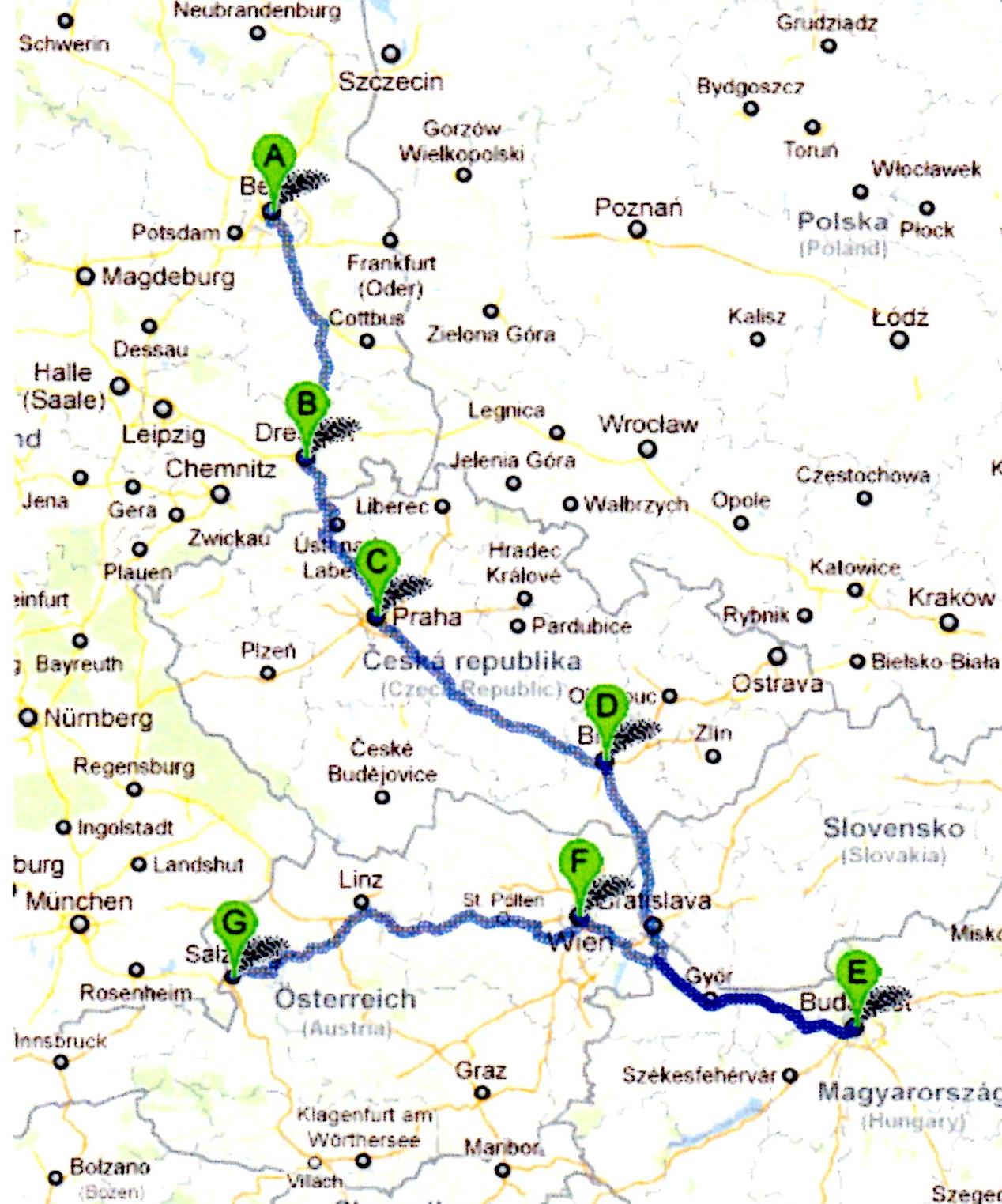CENTRAL EUROPE 2011
Day 20
September 21, Wednesday
Salzburg
The rain and cold weather disappeared. The
day started off a little cold – sweater and jacket, but by the afternoon, I
had shed both. We had a beautiful blue sky and a lot of sunshine.
Today was our Sound of Music Tour. A van
picked us up at our hotel and took us to the tour bus. There were two
couples from Vancouver on the van. Two large tour buses were the
transportation for this tour.
It was
a fun trip. The story told in the Sound of Music is a true story of the
VonTrapp family who lived in Salzburg – he was a captain in the navy and a
Baron. They escaped Salzburg rather than submit to Hitler. The
entire outside and some of interior shots in the movie took place in Salzburg.
We had an excellent guide who narrated about every
stop. He told us that the people of Salzburg did not know the “Sound of
Music”. He told some amusing
stories about this fact. While on the bus the music of Sound of Music was played
and everyone sang.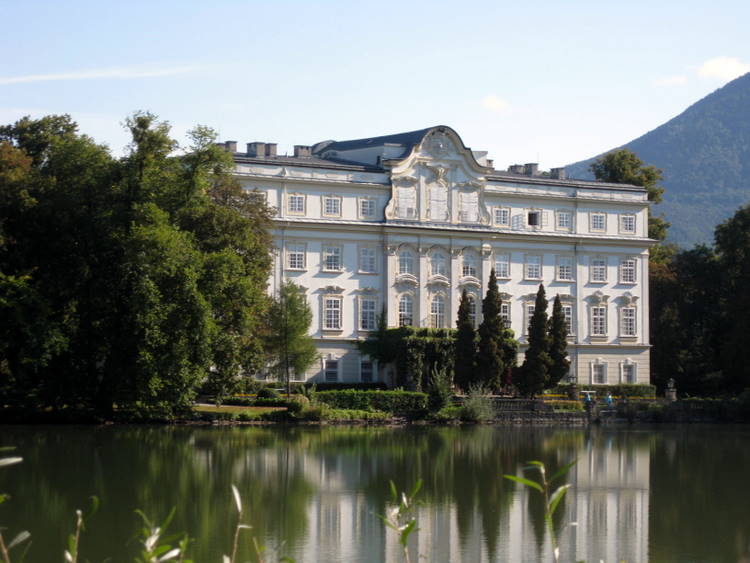
The first stop was across a small lake from
Leopold’s Crown Palace. It was
where Maria and the children stood up in their bo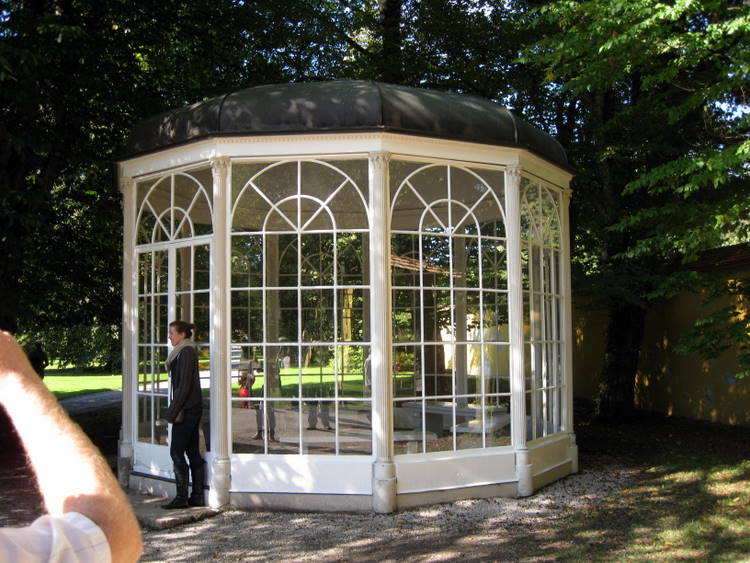 at and fell into the water.
at and fell into the water.
The next stop was the gazebo where Liesl and Rolf sang “Sixteen going
on Seventeen”. The gazebo was locked because an 80 year old lady
was hurt jumping from bench to bench while singing as was seen in the film.
My wife was very disappointed as she had her heart set on doing that.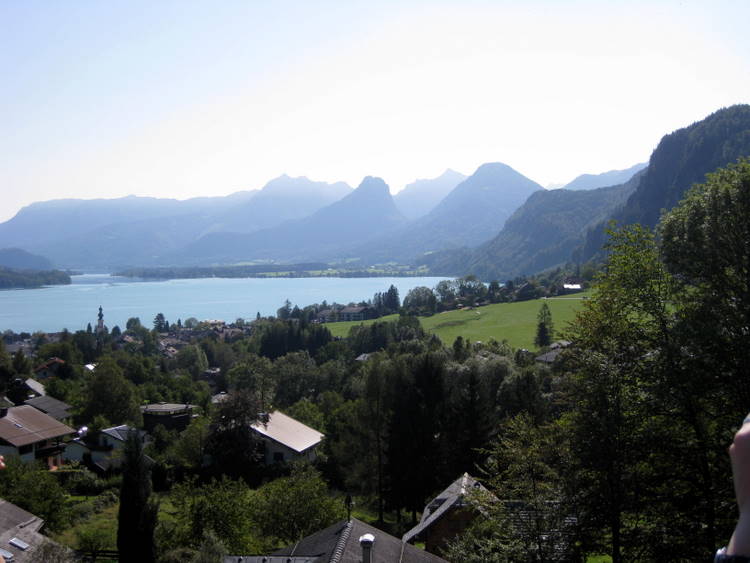
From there we went up into the hills and stopped on
a hill where part of the movie was shot. The
hill at the beginning of the movie is privately owned and no longer available to
the public. The next stop was in Mondsee. It
is here in the Basilica of St. Michael that the wedding was filmed.
In real life the Captain and Maria were married in the Nonnberg Abbey
where Maria was a novice. The chapel
was not large enough for the filming so the church in Mondsee was chosen.
The exterior of St. Michael’s is striking, and
except for the three cross on the towers and center, the façade could be
mistaken for a structure other than a church.
The building is yellow with white columns framing the two towers and
dividing the center section into three parts.
The center section, which is four stories is concave between the two
towers. Over the two center doors
are two windows on each floor. The
top level has two niches with statues. Each floor of the tower has matching
windows and a clock. The top dome is
square.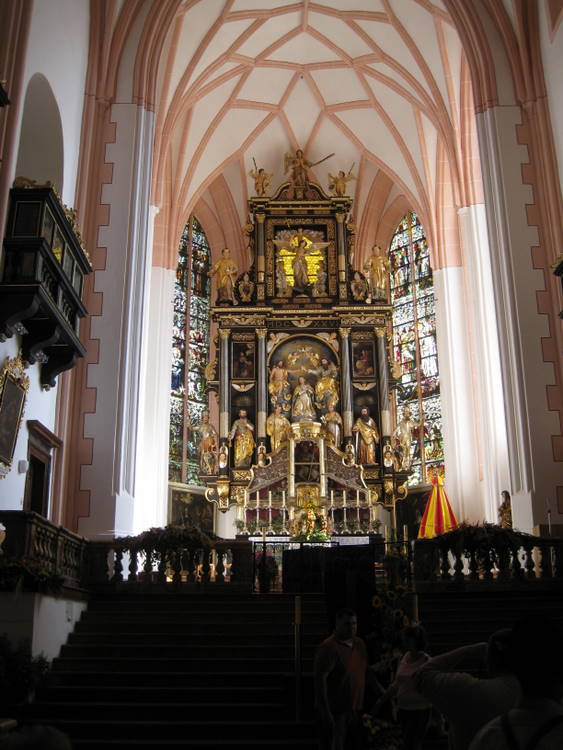
The first building on this site was consecrated in
1104. It is reported that this
church was in deteriorating condition in 1338, but the reconstruction did not
begin until the 15th century. A
Baroque reconstruction of this Gothic church was planned around 1700 but the
only part that was actually built was the façade.
There was a fire in 1774, after which there was considerable rebuilding.
The north tower, in a bad state of disrepair, was demolished in 1963 and rebuilt
in 1967. The most comprehensive
renovations took place as recent as 2004-09.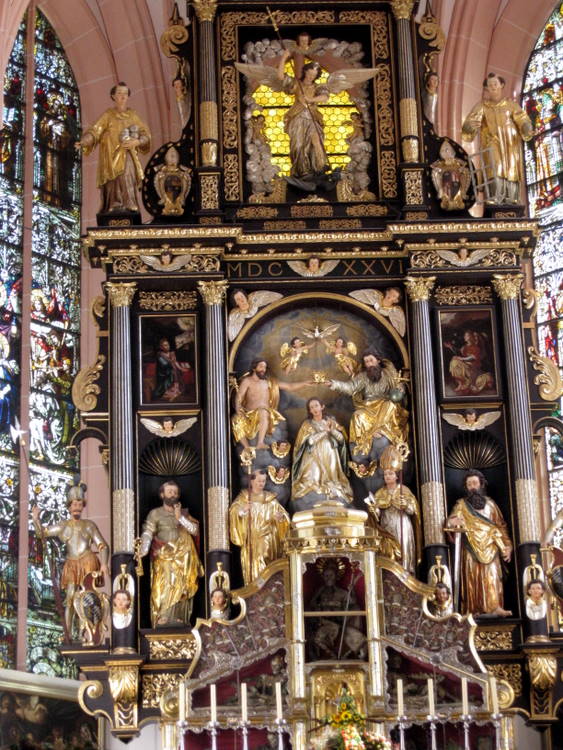
The inside is magnificent, especially the ceiling
with pink ribbing. The design is
known as a form of hexagonal rhombus stars.
A rhombus design is where each side of the hexagon is of equal length.
The early Baroque high altar, dating from 1626 is almost 60 feet high.
The dominant and central scene on the altar portrays the Coronation of
Our Lady by the Holy Trinity, witnessed by St. Benedict and St. Wolfang.
The coronation scene is flanked by the figures of the apostles Peter and
Paul. The center of the
superstructure is occupied by the figures of the archa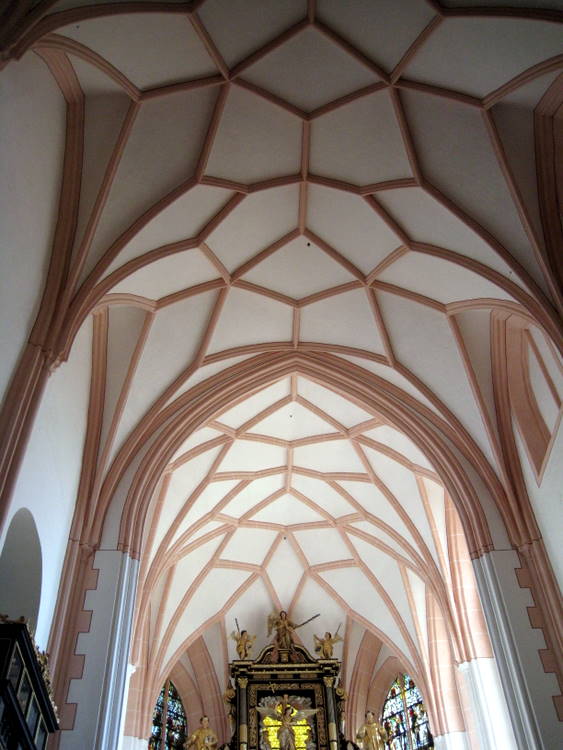 ngel Michael, flanked by
St. Stephen and St. Laurence.
ngel Michael, flanked by
St. Stephen and St. Laurence.
In the nave towards the outside wall there are five
monumental altars which date to 1679 and 1684, all designed and built by Meinrad
Guggenbichler. All the altars
display the original black and gold frame and entwined columns, each with a
different theme. The altars are very
visibile in the wedding march seen of the “Sound of Music.”
We had stopped in Mondsee for an hour so we could
also have lunch. We ate in an outdoor café that was famous for its warm apple
strudel, so that was lunch. Sitting at the next table was a couple from
Warrenton, Va. The tour lasted 4 hours. Now we have to go home and
watch the video of Sound of Music.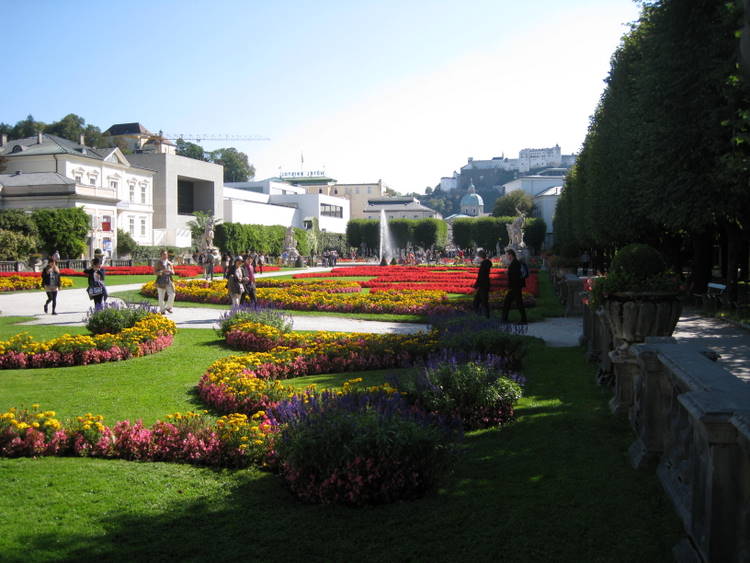
The bus trip ended at Mirabel Gardens which is just
a few blocks from the hotel. We walked through the garden with all of its
beautiful flowers. We stopped by the hotel to leave our jackets, then went
back to old town. There were a lot of people and excitement around the old
town and especiall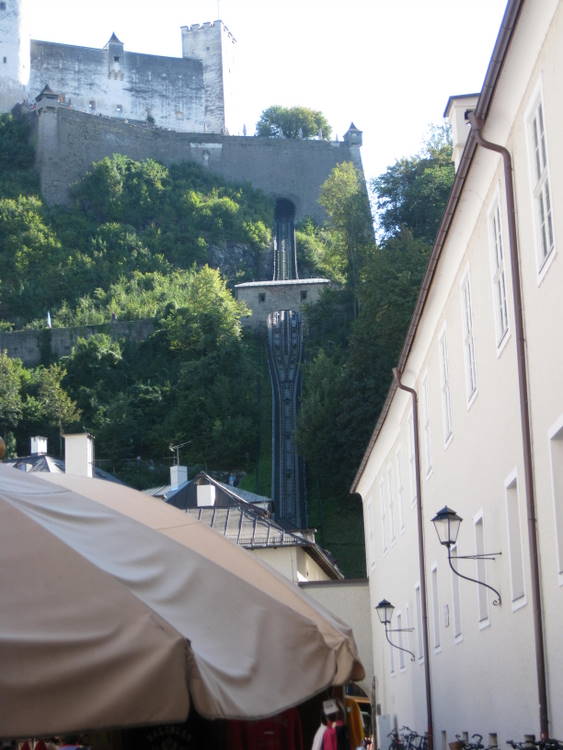 y in front of St. Rupert’s Cathedral, as this was the
beginning of a festival called Salzburger Ruperti-Kirtag.
It is honor Salzburg’s patron saint – Rupert.
The festival runs from September 21st to the 25th. Locals
and visitors change into their lederhosen or dirndl dresses, join the crowd and
enjoy this popular mix of traditional music performances, artisan’s stalls,
children’s entertainment, a fun fair and regional delicacies fresh from the
market.
y in front of St. Rupert’s Cathedral, as this was the
beginning of a festival called Salzburger Ruperti-Kirtag.
It is honor Salzburg’s patron saint – Rupert.
The festival runs from September 21st to the 25th. Locals
and visitors change into their lederhosen or dirndl dresses, join the crowd and
enjoy this popular mix of traditional music performances, artisan’s stalls,
children’s entertainment, a fun fair and regional delicacies fresh from the
market.
We found the funicular that goes to the castle.
It was a beautiful way and the views were spectacular.
The size and shape of the church in the old town section were easily
identified. We were able to get a
better understanding of some of the architecture.
The Hohensalzburg or Salzburg Castle can be seem
from almost anywhere in Salzburg. I hav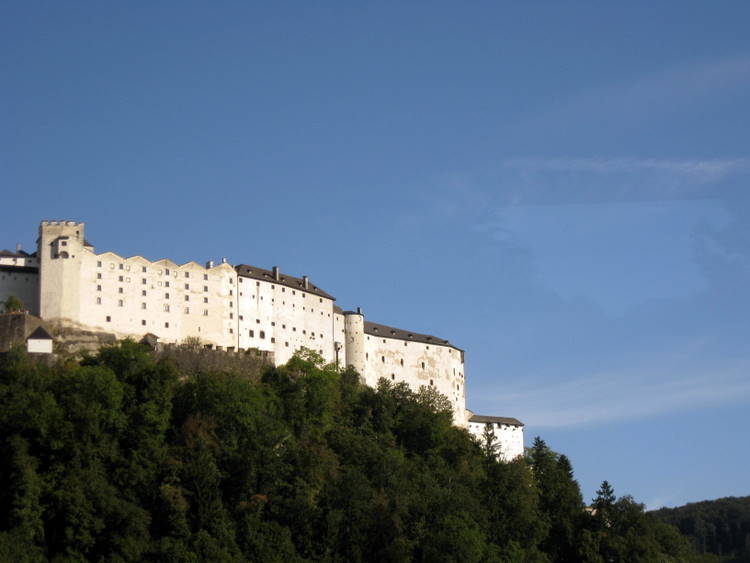 e
a
MODEL of it that I just began, but
didn’t finish before the trip. The castle/fortress was found in 1077 and
is the largest preserved medieval fortress in Central Europe.
It was originally founded by Salzburg’s Archbishop Gebhard, who had
supported the pope in the investiture controversy against the Holy Roman
Emperor. Over the centuries the
archbishops gradually enlarged the castle. Sometim
e
a
MODEL of it that I just began, but
didn’t finish before the trip. The castle/fortress was found in 1077 and
is the largest preserved medieval fortress in Central Europe.
It was originally founded by Salzburg’s Archbishop Gebhard, who had
supported the pope in the investiture controversy against the Holy Roman
Emperor. Over the centuries the
archbishops gradually enlarged the castle. Sometim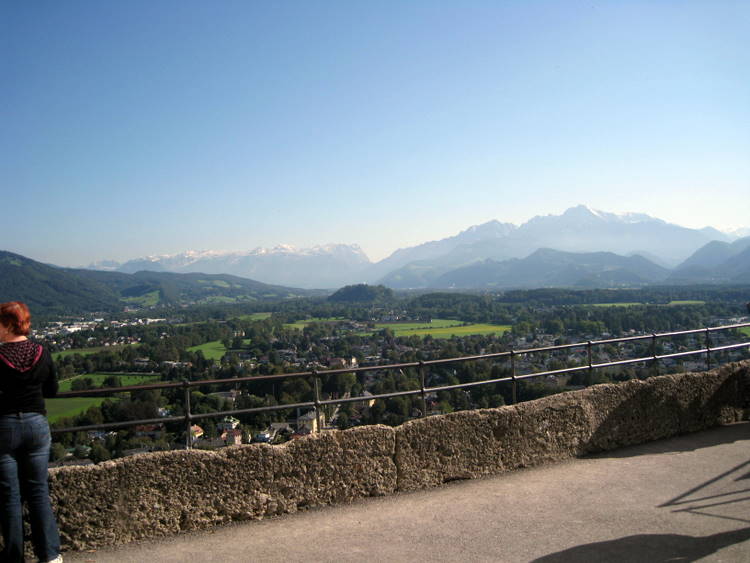 es
they used it as a residence and often for protection from invaders.
es
they used it as a residence and often for protection from invaders.
The ride up the fu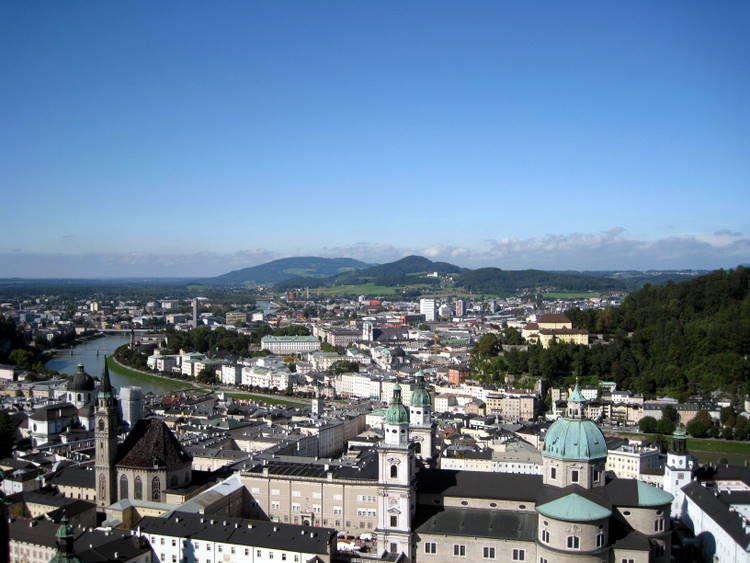 nicular was spectacular as it was
a very clear day. The size and
the shape of the churches in the old town section were easily identified.
nicular was spectacular as it was
a very clear day. The size and
the shape of the churches in the old town section were easily identified.
The funicular ended at a lower terrace which faced
the town of Salzburg. At that level
there was a tower with many steps up to the
door.
We decided we didn’t want to attempt that and maybe there was another
entrance. We walked around the side
and found a set of step leading to a lower level.
My wife sent me on test run to see what was do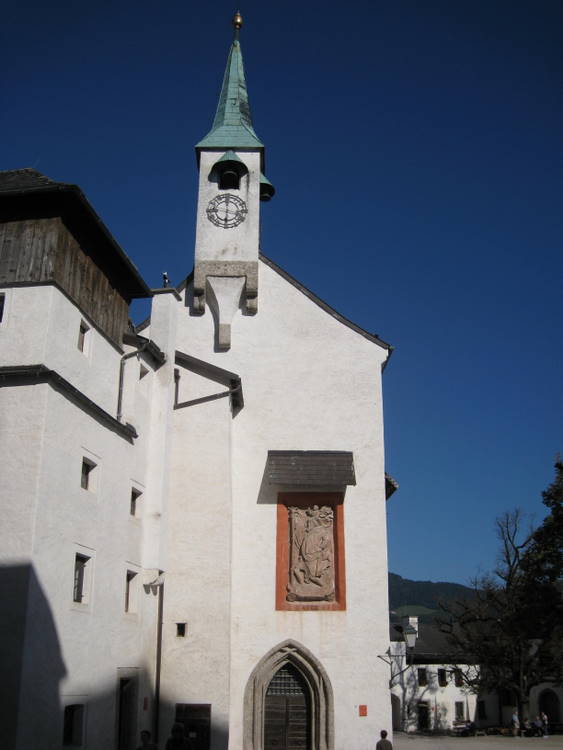 wn there.
It offered a wonderful view from the other side of the castle towards the
mountains. She came down and
then we walked up another flight of steps to a wonderful terrace with a
spectacular view. There were more
steps leading into the upper wall. At
that point she decided not to tackle any more steps.
She had walked to the top of the castle about twenty years before.
wn there.
It offered a wonderful view from the other side of the castle towards the
mountains. She came down and
then we walked up another flight of steps to a wonderful terrace with a
spectacular view. There were more
steps leading into the upper wall. At
that point she decided not to tackle any more steps.
She had walked to the top of the castle about twenty years before.
So I ventured up and walked around all of the areas that I had remembered
on the model. Of interest was ST.
GEORGE'S CHAPEL whi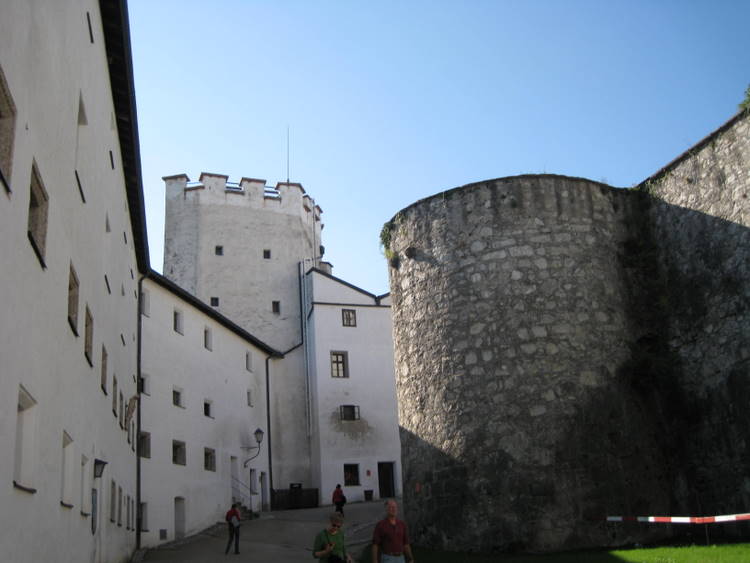 ch was a small chapel which contained a 200 pipe organ
from the beginning of the 16th century. Click
here to see my model of Hohensalzburg.
ch was a small chapel which contained a 200 pipe organ
from the beginning of the 16th century. Click
here to see my model of Hohensalzburg.
We took the funicular back down and walked through
St. Peter’s graveyard which is b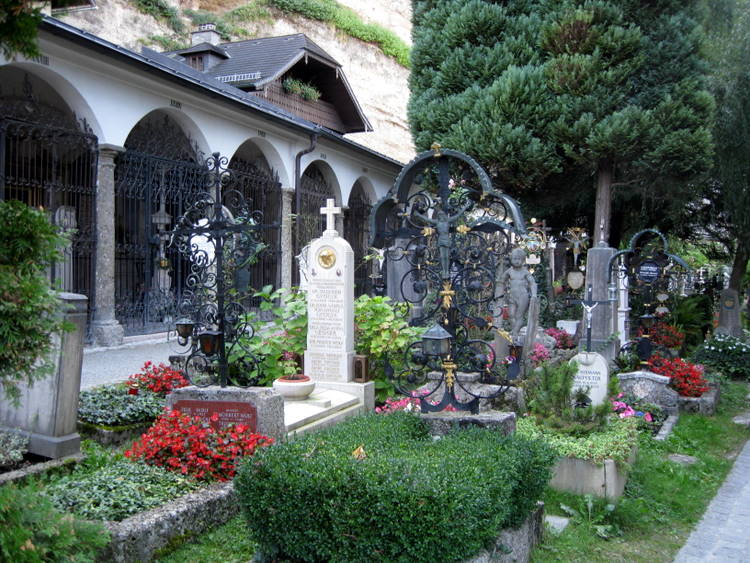 ehind St. Peter’s church.
It dates back to the first half of the 17th century.
There is small church, Chapel of St. Margaret, in graveyard.
It was not open. There
were very interesting gravestones and many of the grave sites were planted with
bright red flowers. On the
left side – towards the castle- were three cave chapels built into the wall.
They had once served as hermitages for the monks associated with St.
Peter’s. They were open to the
public, and we could see people passing some of the windows, but we didn’t go
in.
ehind St. Peter’s church.
It dates back to the first half of the 17th century.
There is small church, Chapel of St. Margaret, in graveyard.
It was not open. There
were very interesting gravestones and many of the grave sites were planted with
bright red flowers. On the
left side – towards the castle- were three cave chapels built into the wall.
They had once served as hermitages for the monks associated with St.
Peter’s. They were open to the
public, and we could see people passing some of the windows, but we didn’t go
in.
We talked back through old town, across the bridge
to our hotel. My wife got some ice for her knee and took a nap. I
went to see a church nearby – The Church of the Holy Trinity.
The Church of the Holy
Trinity was completed in 1702 with changed made in 1757 and aga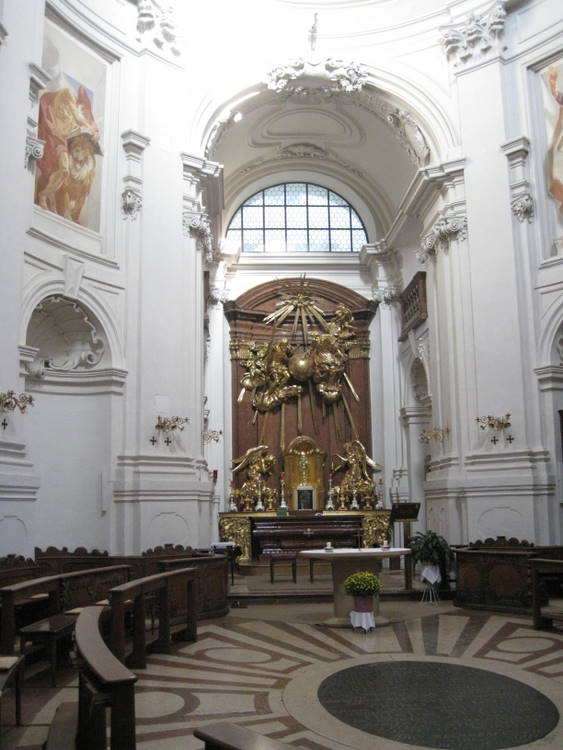 in after the fire
in 1818. The front of the church has two flanking towers with a concave front
between them – much like the church in Mondsee.
In the center is a large dome with a copper colored top.
The two towers have green roofs. Upon
entering the church, there is immediately an iron fence and gate.
It was locked but I could get a good look at the interior which was
topped by an elongated cupola. The
chairs were around the enlongated floor. The
altar piece was very Baroque, consisting of brass figures of the Trinity near
the top. God, the Father has his
hand on a very large brass sphere, while Jesus is holding a cross and above the
Holy Spirit, represented as a dove has streams of brass light radiating from it.
in after the fire
in 1818. The front of the church has two flanking towers with a concave front
between them – much like the church in Mondsee.
In the center is a large dome with a copper colored top.
The two towers have green roofs. Upon
entering the church, there is immediately an iron fence and gate.
It was locked but I could get a good look at the interior which was
topped by an elongated cupola. The
chairs were around the enlongated floor. The
altar piece was very Baroque, consisting of brass figures of the Trinity near
the top. God, the Father has his
hand on a very large brass sphere, while Jesus is holding a cross and above the
Holy Spirit, represented as a dove has streams of brass light radiating from it.
I stopped at a nice bar in another hotel.
I was the only person in there. We needed to find a place for a
quick dinner as we had tickets to a concert in the Mirabell Palace. Our hotel
had an attractive café in addition to the dining room so we had a light dinner
there.
This evening we planned to go to the Mirabell
Palace for a concert. We had ordered tickets a long time ago as seating is
limited and tickets are hard to obtain..
THE MIRABELL
PALACE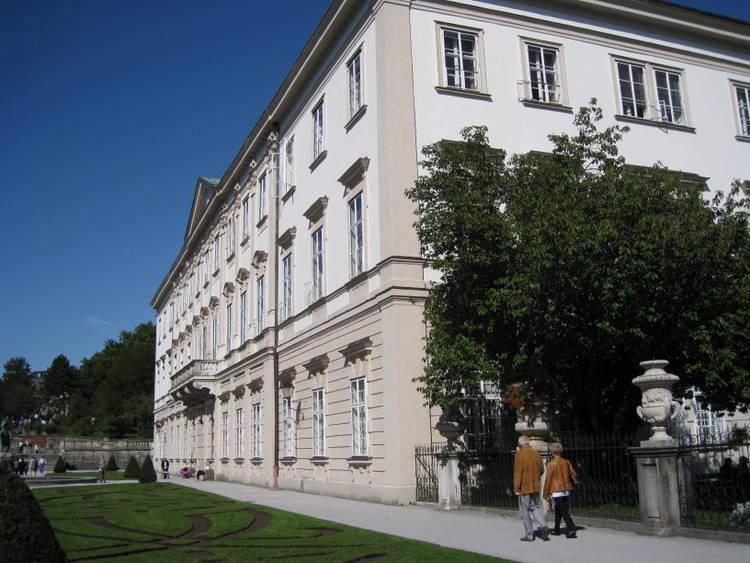
Mirabell Palace was built in 1606 by a very wealthy
and powerful Prince-Archbishop Wolf-Dietrich for his mistress, Salome Alt, and
their 15 children. Because of its
great beauty, it was taken over by succeeding prince-archbishops.
It received a facelift in 1717. The
disastrous fire of 1818 destroyed much of the palace. 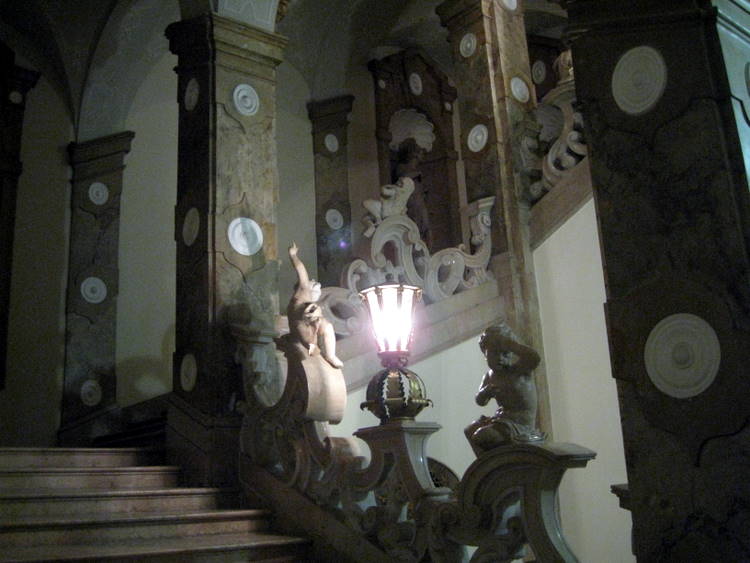
Three of the most
spectacular parts of the palace – the Chapel, the Marble Hall, and the Angel
Staircase survived. Today the Palace serves as a municipal office and the seat
of the mayor of Salzburg.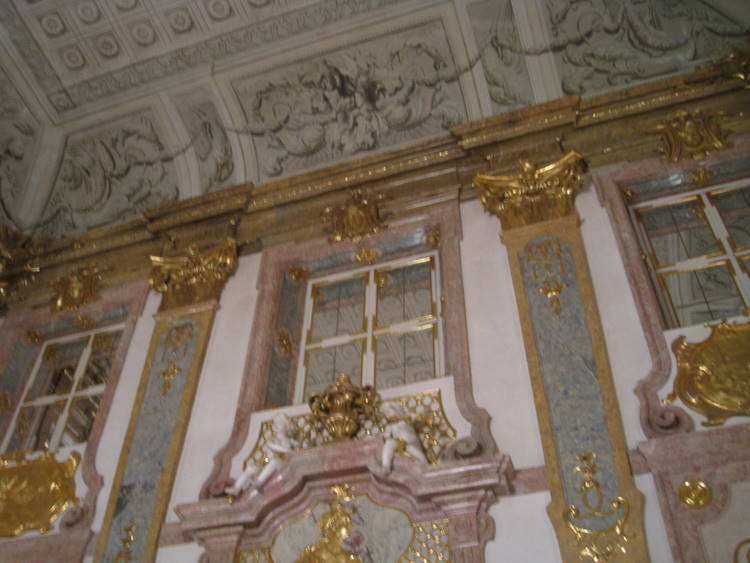
The concert was in the Marble Hall which was on the
second floor. There were no
elevators so we walked up the beautiful Angel Staircase.
This staircase with sculptures by Georg Rafael Donner, is draped with
white marble putti (little angels), whose faces and gestures reflect a multitude
of emotions, from questioning innocence to jeering mockery.
We arrived in the ante-room of Marble Hall a few
minutes before the doors opened. 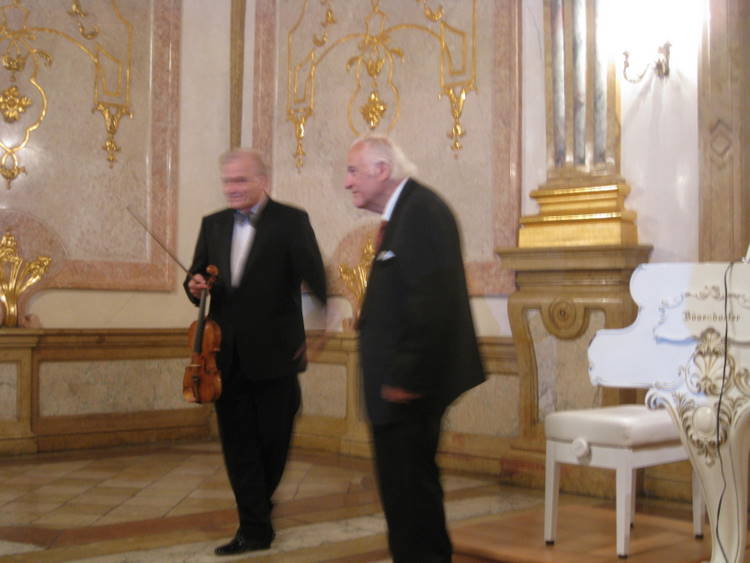
The
walls of Marble Hall were all stucco marble, the ceilings must have been 40 feet
tall. Everything was beautifully Baroque. The concert featured Jorg Demus,
an 83 pianist and a violist, Luz Leskowitz. They played Schubert, Mozart,
Beethoven, Debussy and Franck. Jorg Demus played three long Impromptus by
Schubert without any sheet music. What
agile fingers for someone his age….ten years older than I am! The hall held
about 100 chairs and was full. The acoustics were wonderful.
We sat next to a couple from Miami. We walked back home and to bed
after a very nice day. Tomorrow is our last day.


 at and fell into the water.
at and fell into the water. 
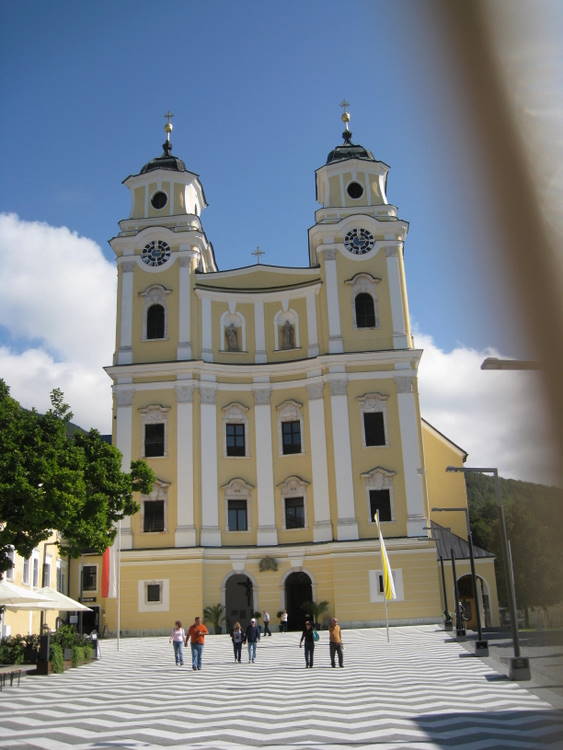


 ngel Michael, flanked by
St. Stephen and St. Laurence.
ngel Michael, flanked by
St. Stephen and St. Laurence. 
 y in front of St. Rupert’s Cathedral, as this was the
beginning of a festival called Salzburger Ruperti-Kirtag.
It is honor Salzburg’s patron saint – Rupert.
The festival runs from September 21st to the 25th. Locals
and visitors change into their lederhosen or dirndl dresses, join the crowd and
enjoy this popular mix of traditional music performances, artisan’s stalls,
children’s entertainment, a fun fair and regional delicacies fresh from the
market.
y in front of St. Rupert’s Cathedral, as this was the
beginning of a festival called Salzburger Ruperti-Kirtag.
It is honor Salzburg’s patron saint – Rupert.
The festival runs from September 21st to the 25th. Locals
and visitors change into their lederhosen or dirndl dresses, join the crowd and
enjoy this popular mix of traditional music performances, artisan’s stalls,
children’s entertainment, a fun fair and regional delicacies fresh from the
market.  e
a
MODEL of it that I just began, but
didn’t finish before the trip. The castle/fortress was found in 1077 and
is the largest preserved medieval fortress in Central Europe.
It was originally founded by Salzburg’s Archbishop Gebhard, who had
supported the pope in the investiture controversy against the Holy Roman
Emperor. Over the centuries the
archbishops gradually enlarged the castle. Sometim
e
a
MODEL of it that I just began, but
didn’t finish before the trip. The castle/fortress was found in 1077 and
is the largest preserved medieval fortress in Central Europe.
It was originally founded by Salzburg’s Archbishop Gebhard, who had
supported the pope in the investiture controversy against the Holy Roman
Emperor. Over the centuries the
archbishops gradually enlarged the castle. Sometim es
they used it as a residence and often for protection from invaders.
es
they used it as a residence and often for protection from invaders. nicular was spectacular as it was
a very clear day. The size and
the shape of the churches in the old town section were easily identified.
nicular was spectacular as it was
a very clear day. The size and
the shape of the churches in the old town section were easily identified.



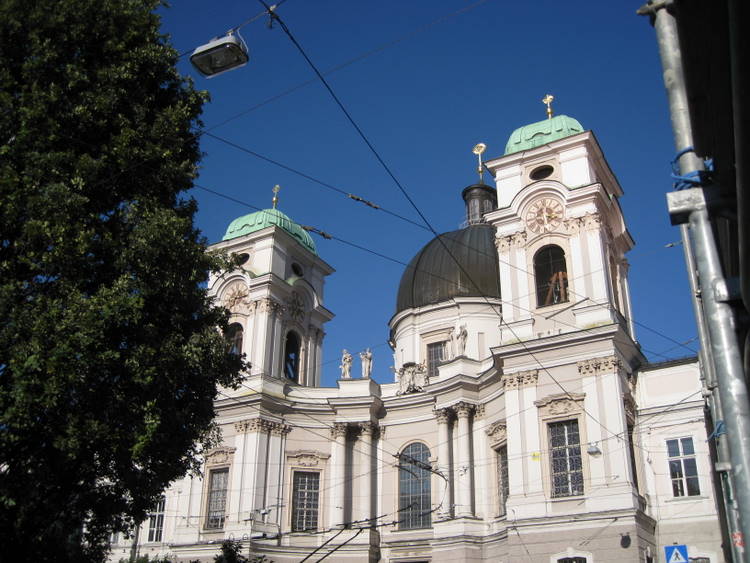
 i
i



